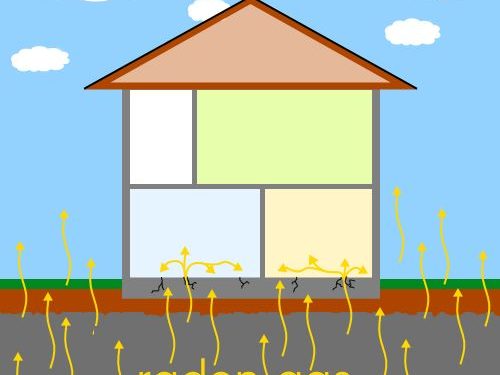Why do Radon Levels in the Home Tend to Fluctuate Seasonally
Why do Radon Levels in the Home Tend to Fluctuate Seasonally?

Why do Radon Levels in the Home Tend to Fluctuate Seasonally?
A client asked this recently, a common question this time of year. After getting their radon test results, they questioned the range of results over the test period, so they did some research. They found there isn’t just one answer to their question; a variety of factors must be considered. One point that tends to hold true is that radon levels in homes are generally higher when houses are closed, including heating season, the summer season if you have AC, and even spring if you have allergies. In Connecticut, that can cover about 9 months of the year! It must be noted, these fluctuations are expected when testing, and have been taken under consideration by the EPA in creating the testing guidelines and the 4.0 action level.
In addition to these closed-house conditions, we must consider the “ground conditions” as contributors to indoor radon levels. Look out the window, is the ground wet, snow-covered, or frozen? Any of those conditions create a soil seal that will force more radon into your home, often referred to as “The Blanket Effect”. Just as a blanket can trap body heat, covered ground at the exterior can trap radon gases. As a soil gas, radon will follow the path of least resistance. When the ground is sealed, the path of least resistance is going to be through your home.
Having a Certified Radon Test conducted in your home is the best way to determine your radon exposure. Testing for radon now makes sense to understand what the potentially highest levels of radon in your home are. Call Tiger today to schedule your radon test by our Certified Radon Staff.
Protecting Yourself and Your Family from Radon
Radon levels can soar during the colder months when residents keep windows closed and spend more time indoors. As many as 22,000 people die from lung cancer each year in the United States from exposure to indoor radon.
EPA Recommends:
Testing your home for radon — it’s easy and inexpensive.
Remediate if your radon level is 4 picoCuries per liter (pCi/L) or higher.
Radon levels less than 4 pCi/L still pose a risk, and in many cases may be reduced.
Read EPA’s “Citizen’s Guide to Radon: The Guide to Protecting Yourself and Your Family From Radon.”
Thanks to Tiger Home Inspections for sharing this information
Labels: # 1 Westport Real Estate Agent, # Radon information, #Real Estate information, #Top Real Estate Agents Westport CT


0 Comments:
Post a Comment
<< Home